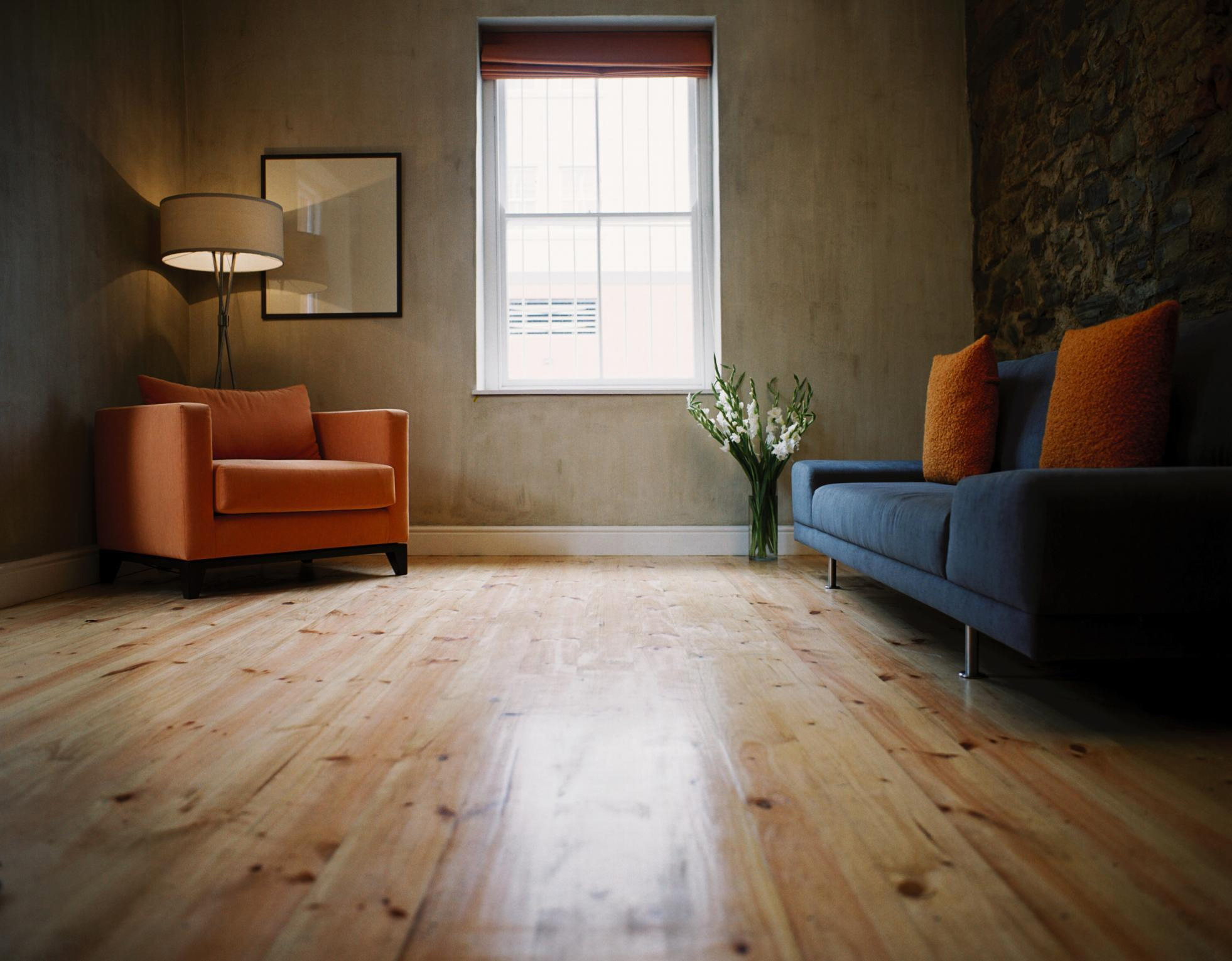The wood life
Wooden floors are practical, look fantastic and help to sell homes – what’s not to love? Julia Gray reports how you can get the look
If you have period floorboards in your home, lucky you. If you don’t, it doesn’t mean you are doomed to be unlucky though – installing wooden flooring is easier than ever before.
Period floorboards are often hidden under carpet, tiles or lino, waiting to be discovered and restored to their former glory. This process usually means sanding with an industrial floor sander and edger, which is hard, hot and dusty work. Although more expensive, employing someone to sand them for you is, in my opinion, well worth it. They usually include the cost of the wood stain or varnish in the price and they’ll also be able to do the job quicker than you can.
Original floorboards often have modern boards mixed in where repairs have been done over the years, and painting these boards can disguise them better than using a stain or varnish (although dark stains and varnishes can work well). You can, of course, replace the new boards with old ones, but this can be expensive and time-consuming, with no guarantee they’ll match perfectly when sanded.
All that said, original floorboards are a fantastic feature in a period house or flat and there’s nothing more satisfying than revealing and enjoying them after years under cover.
What if you don’t have original wooden boards? Laminate flooring, which has a picture of wood printed onto boards, is an inexpensive and easy way to copy the look. It’s not as fashionable as it once was though, so instead, why not opt for wooden flooring boards that click together, with no nails, screws or glue required? This system is widely available to buy, easy to fit, it won’t break the bank, and is possible for both engineered and solid wood flooring.
Engineered wood boards have a top layer of real wood, with cheaper layers underneath. The thickness of the wood layer varies, so make sure you know how thick it is and how many times, if any, it can be sanded. A floor that can be sanded a few times is a good investment because it can take more wear and tear.
As lovely as solid wood is, engineered wood can be a more practical choice because the layers give it added strength and durability. Unlike solid wood, it shouldn’t shrink and expand when exposed to moisture and changes in temperature and humidity.
Most wooden flooring comes finished, sealed and ready to fit, but you can get bare wood if you want to stain, varnish or paint it yourself, either conventional floorboards or, again, boards that click together for easy fitting.
If your home is leasehold, you may have to get the freeholder’s permission to fit wooden flooring or have the original floorboards exposed, especially if you have neighbours underneath. See what the lease says because it may have clauses about wooden floors or causing a noise nuisance, although installing sound-absorbing underlay may be an acceptable solution to the freeholder.
With everything considered, getting the wooden floor of your dreams could be a bit of a battle – but the result will be worth it.
Latest posts by Sally - Silversurfer's Editor (see all)
- Do you like the new Jaguar rebrand? - November 21, 2024
- Christmas Decorations Masterclass: Make your own Festive Wreath, Garland and Flower Centrepieces - November 21, 2024
- Finding warmth in cold days - November 21, 2024
- Fall in love with Norfolk Hideaways - November 20, 2024
- Would you prefer a cup of tea or a gin & tonic? - November 19, 2024






















